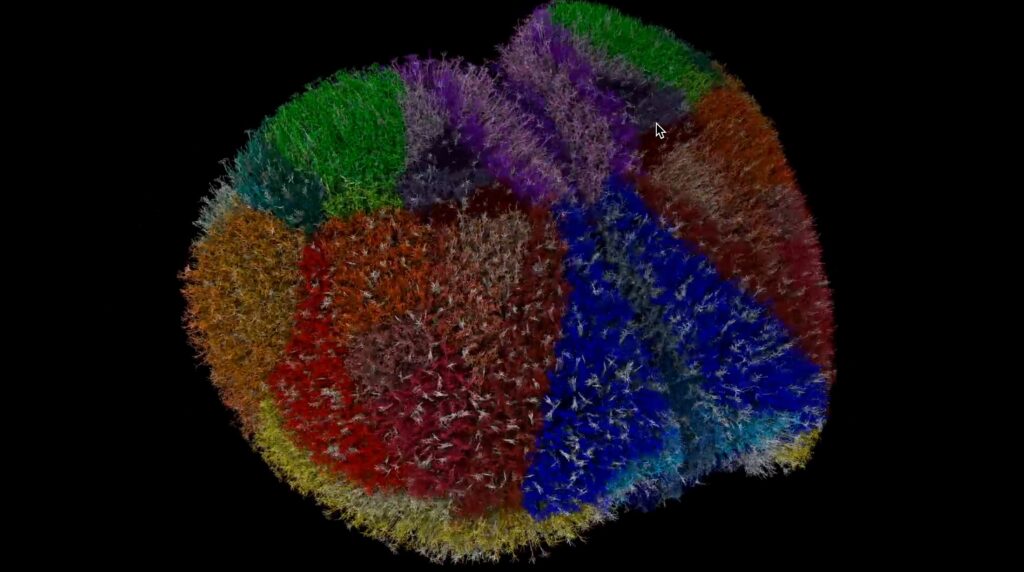One of the largest, and most detailed, biophysically realistic brain simulations of an animal has been built using one of the world’s fastest supercomputers. This virtual copy of a whole mouse cortex opens new ways to study the brain: simulating diseases like Alzheimer’s or epilepsy to watch in detail how damage spreads throughout neural networks or understanding cognition and consciousness. It simulates both form and function, with almost ten million neurons, 26 billion synapses, and 86 interconnected brain regions.
“This shows the door is open. We can run these kinds of brain simulations effectively with enough computing power,” said Anton Arkhipov, PhD, an investigator at the Allen Institute who worked on the project. “It’s a technical milestone giving us confidence that much larger models are not only possible, but achievable with precision and scale.”
The work is currently under review and will be published soon, in coordination with SC25—the world’s premier supercomputing conference taking place in mid-November.
This global collaboration merges human neuroscience expertise with the computing power of Fugaku—the Japanese flagship supercomputer jointly developed by RIKEN and Fujitsu. Fugaku (the name comes from Mount Fuji, and just like the mountain’s high peak and broad base, it was chosen to symbolize its power and wide reach) is one of the world’s fastest supercomputers capable of more than 400 quadrillion operations per second.
“Fugaku is used for research in a wide range of computational science fields, such as astronomy, meteorology, and drug discovery, contributing to the resolution of many societal problems,” said Tadashi Yamazaki, PhD, from Japan’s University of Electro-Communications. “On this occasion, we utilized Fugaku for a neural circuit simulation.”
The supercomputer is made up of nodes, which are grouped together in layers like units, shelves, and racks. Together, these components add up to a total of 158,976 nodes, allowing Fugaku to manage a massive volume of data and computations.
Using the Allen Institute’s Brain Modeling ToolKit, the team translated data into the working digital simulation of the cortex. A neuron simulator, Neulite, turned equations into neurons that spike, signal, and chatter just like their living counterparts.
The simulated mouse cortex captures the structure and behavior of brain cells, down to the activations of synapses. “It’s a technical feat, but it’s only the first step,” said Yamazaki.
“Our long-term goal is to build whole-brain models, eventually even human models, using all the biological details our Institute is uncovering,” said Arkhipov. “We’re now moving from modeling single brain areas to simulating the entire brain of the mouse.” With this kind of computational power, the goal of a full, biophysically accurate brain model isn’t just science fiction anymore. Scientists are in a new frontier where understanding the brain means, quite literally, being able to build one.

